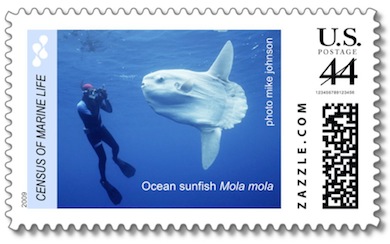We post Jesse’s “On Sparing Farmland and Spreading Forest.” Prepared as a plenary talk for the September 2001 Denver convention of the Society of American Foresters, it was not delivered because of 9/11 but will be published in the proceedings, soon to appear.
Blog
Can Technology Spare the Earth?
We post the 1996 American Scientist magazine article Can Technology Spare the Earth?
Maglevs and the Vision of St. Hubert
We newly post Jesse’s plenary address to the July 2001 Amsterdam Global Change Open Science Conference, “Maglevs and the Vision of St. Hubert.”
Census of Marine Life US Postal Stamps
July issue of Fisheries
The July issue of Fisheries, the magazine of the American Fisheries Society, contains Jesse’s update ‘The Census of Marine Life: Progress and Prospects.’
We post the paper Nitrogen on the Land: Overcoming the Worries, which appeared this summer in Pollution Prevention Review.
The journal issue on “Scientists, War, and Diplomacy: European Perspectives” that Jesse co-edited has now been published. For Jesse’s introduction to the subject, the table of contents, and the foreword co-authored with Alexander Keynan, visit “Scientists, War, Diplomacy, Europe.”
An article in Investor’s Business Daily
An article in Investor’s Business Daily is published about the PHE.
Click here for this article as a Microsoft Word Document.
August 6, 2001 A; Pg. 20
Worried About Global Warming? Just Remember Human Ingenuity
An old story is repeating itself in all the horror stories of global warming. Those predictions of melting ice caps, flooded cities, mass extinctions, monster storms and rampant tropical diseases reveal, once again, the brainless-human theory at work. This has long been a problem with the Jeremiahs of the environmental movement. They predict utter ruin for mankind and the planet if we don’t radically change our ways (which usually means giving up personal freedom). The disasters consistently fail to occur, not because humans are lucky but because they use their gray matter. They learn, they share their knowledge and they put it to work. They solve their resource problems without sinking into self-deprivation. The debate over climate change has a lot in common with past concerns over what’s often called the “carrying capacity” of the planet. The idea that the human species will inexorably grow beyond its food supply or other resources goes back to Thomas Malthus on the eve of the 19th century. Malthus, like so many after him, underestimated the effect of the organized brainpower that was just being unleashed in the Industrial Revolution. As it turned out, people learned how to feed a far larger population than that of Malthus’ time. Later, in 1865, economist William Stanley Jevons predicted Britain would run out of coal and slide into economic stagnation. ‘Demographic Transition’ In the 20th century, geologist King Hubbert and others saw the same gloomy future for oil. New Malthusians such as biologist Paul Ehrlich said population growth would soon lead to worldwide chaos. They all misread the signs, for much the same reason: They didn’t account for human ingenuity. They didn’t factor in new knowledge, new technology and (in the case of population) the ease with which human societies can adjust their behavior to new conditions. Now scientists talk of a “demographic transition,” with world population leveling off sometime in this century because of falling birthrates, rather than a “population bomb.” With global warming, climate scientists working under U.N. auspices have tried to work economics and other patterns of human behavior into their scenarios. The trouble: The scariest scenarios get the most attention. These are based on the most dubious assumptions. Jesse Ausubel, an environmental scientist with Rockefeller University in New York and a longtime student of climate change, says only a couple of these story lines “pass the common-sense test” – and these lead to the more benign climate forecasts. The others, he said, seem to assume a sudden breakdown of technological and scientific progress. “I can’t imagine, if the universities and labs of the world keep going, how some of the scenarios (the scientists) posit can happen.” Ausubel is not a global-warming skeptic. He accepts the view that temperatures have been rising, at least in part because of human activity. But he sees technology evolving to meet the challenge. One type of evolution, the “decarbonization” of energy, is about as old as the Industrial Revolution itself. This is the gradual replacement of high-carbon forms of fossil fuel – wood first, then coal – with those that have lower carbon ratios, such as oil and natural gas, and emit less carbon dioxide when burned. Natural gas, made up mostly of the lighest hydrocarbon, methane, emits two-thirds the CO2 of oil and a third the CO2 of coal. One expert on energy and the environment, Nebojsa Nakicenovic of Austria-based International Institute for Applied Systems Analysis, says the ratio of carbon emissions per unit of primary energy has fallen 0.3% a year since 1860. That’s on top of the world’s steadily higher energy efficiency, which, according to Nakicenovic, has led to a 1% yearly decrease in the energy required for each unit of economic output. Like China, Like America The shift toward natural gas in recent decades is one reason greenhouse gas emissions in the U.S. increased at only half the rate of economic growth during the 1990s. The U.S., which still gets half of its electric power from coal-burning plants, can potentially shift a lot more of its energy load to gas. So can China, a coal-dependent country where shifting to gas would go far to solve severe air pollution problems. Decarbonization has come this far without the help of global treaties such as the Kyoto pact. It happened because industries needed more efficient sources of energy and the public wanted cleaner power. There’s every reason to think the same forces will keep this trend going, with more energy production shifting to natural gas. Count On People Further down that road is an economy based on hydrogen alone – methane stripped of its single carbon atom. Hydrogen is costly to produce, and doesn’t play much of a role outside certain exotic uses, such as powering spacecraft. If history is any guide, hydrogen should have its day. People will continue to demand cleaner and lighter fuel, and the technology of extracting hydrogen should advance to make the process cheaper. It’s impossible to measure the impact of technologies not yet known. But if the new century is to be anything like the last two, people a century hence will be using energy in new and vastly more efficient ways. With luck, the Kyoto process will be mostly forgotten, having petered out in the century before its command-and-control regime could do any economic damage. The global warming crisis also will be a distant memory. The doomsayers will have long since found new ways to feed the world’s worries. Some things never change.
Papers Posted
We post the paper How Much Will Feeding More and Wealthier People Encroach on Forests?, which just appeared in the journal Population and Development Review.
We also post the paper DRAMs as Model Organisms for Study of Technological Evolution, which will appear soon in the journal Technological Forecasting and Social Change.
Natural Restoration Promised if Humans Embrace Technology
Fred Pearce, BioMedNet News, www.bmn.com
Amsterdam — Planet Earth is on the verge of a “great restoration” of nature – or it will be, provided humanity takes the right tack in the coming decades, claimed a leading environmental scientist today at a major conference here on global change that saw an outpouring of optimism from technologists about their ability to solve the world’s problems.
“Since the middle of the 20th century, humans have begun to reverse the pattern they followed for millennia of extending further into nature to meet needs for food and materials,” said Jesse Ausubel, director of the Program for the Human Environment at The Rockefeller University in New York. “I am convinced that a great reversal is under way,” he told delegates at the Global Change Open Science Conference, organized by the International Geosphere-Biosphere Programme. The IGBP comes under the auspices of the International Council for Science (ICSU) at the Royal Academy of Sciences in Stockholm.
Global farm yields have risen by more than 2% a year for 40 years now, says Ausubel. If farmers continue that progress for another 60 to 70 years, average farm yields will reach those of the US corn farms and Chinese rice farms today. And as world population growth slows, “only half of today’s cropland will be needed,” he noted.
The key will be “environmentally responsible precision agriculture”, using technology to apply fertilizers, pesticides, and water only where they are needed. “High yield is the best friend of habitat,” said Ausubel.
Likewise, he says, forestry will concentrate on much smaller areas of highly productive plantations. By 2050, he calculates, “production forests” could diminish to “just about 12% of all woodlands.” The new plantations would mostly be established on abandoned farmland.
Far from declining, the world forest cover could increase by 300 million hectares, or 10%. The spare land could go back to nature. In the US alone, “an area twice the size of Spain could be newly spared for nature in the coming century,” he noted. “Smart aquaculture in highly productive closed systems” and a few iron-fertilized ocean farms will replace hunting for fish on the high seas. “Adding the right nutrients in the right places might lift fish yields by a factor of hundreds,” he said.
The result will be a resurgence of marine biodiversity and “the preservation of traditional fishing where communities value it.”
Ausubel’s optimistic vision extends to urban landscapes, where he sees cities surrounded by nature and connected by underground maglev
(magnetically levitated) trains. “We already have a Faustian bargain with technology. Having come this far with it, there is no road back,” he insisted. Now, he says, we can have a technological future – and nature, too.
The public reaction against the benefits of technology had to be halted, said many delegates.
“We have become so terrified of the downside of technology that we tend to pay little attention to the risks of not doing things,” warned William Clark, professor of international science, public policy, and human development at Harvard. “Technology can mess things up – you only have to think of Chernobyl – but we have to find ways of using it positively.”
Scientists behind the green revolution in farming joined in claiming credit for saving nature from the plough.
More than 400 million hectares of forests and grasslands have been saved through planting high-yield green revolution crops on existing farmland, according to Louis Verchot of the Nairobi-based International Research Centre for Agro-forestry (ICRAF), based in Nairobi. That is, an area almost half the size of the US.
We post the paper
We post the paper Death and the Human Environment, which appeared this
month in the journal Technology in Society.
We post the article
We post the article The Evolution of Transport, which
appeared in this months issue of the magazine,
The Industrial Physicist.


